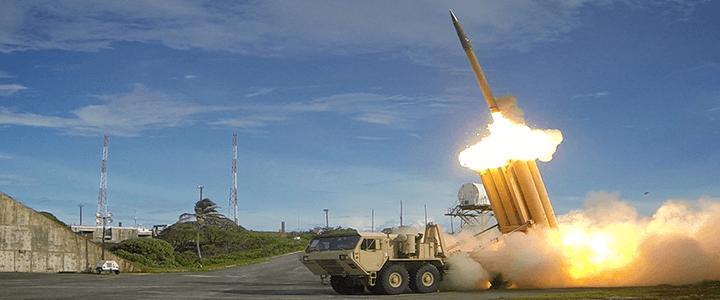While there’s a war of words going on between Washington and Pyongyang, there’s a war over words going on inside the Beltway. Arguments over the Trump Administration’s response to Monday’s report that North Korea has miniaturized a nuclear weapon confirmed exactly what many have suspected since November: there is a certain segment of the population for whom nothing the president does or says will be the right thing to say.
The argument stems from the president’s statement that any further threats from the DPRK would be met with “fire and fury.” Trump is a blunt-talking man, but the pundit class refuses to see any kind of nuance in anything he says. They have interpreted his words to mean two things: the president must react immediately to any new threats, and that he has left himself no options except nuclear response. They’re even calling Trump’s statement a “red line” in an effort to draw a parallel to President Obama’s inaction following Syria’s use of chemical weapons, after Obama specifically stated precisely where that red line was.
tillerson and mattis responses to North Korea
Trying to paint the administration as divided and uncoordinated, the media has chosen to highlight one part of Secretary of State Rex Tillerson’s statement to reporters aboard his plane as they returned from a trip to Asia. “I think Americans should sleep well at night, have no concerns about this particular rhetoric of the last few days,” Tillerson said, adding, “Nothing I have seen and nothing I know of would indicate that the situation has dramatically changed in the last 24 hours.”
Most reports fail to mention that Tillerson also said exactly what I’ve been saying on Twitter for the past two days: “What the president is doing is sending a strong message to North Korea in language that Kim Jong-un would understand, because he doesn’t seem to understand diplomatic language.”
Secretary of Defense James Mattis then issued a written statement in which he said, “The DPRK should cease any consideration of actions that would lead to the end of its regime and the destruction of its people.” In practical terms, this is no different than the president’s off-the-cuff remarks; it is the same idea using more government-friendly language. Yet the Twitterverse in particular greeted this as further evidence that Mattis is “the adult in the room” and the president is behaving rashly.
I hate to disappoint the reporters at CNN and the New York Times, but the idea that we will meet future aggression with fire and fury, and the idea that nothing has really changed in the last few days are not contradictory. The president reiterated, in his typically direct way, what every U.S. president has said in one way or another since the DPRK began its quest for nuclear weapons: a nuclear-armed North Korea is not an acceptable state of affairs.
what will be the response to the latest threat?
Yesterday, DPRK Gen. Kim Rak Gyom, head of the country’s strategic rocket forces, called the president’s words “nonsense” and vowed to launch four intermediate-range missiles toward the U.S. island of Guam. Since this is obviously a threat, and the president specifically warned against additional threats, the media immediately seized on the fact that North Korea is not yet a glowing nuclear wasteland to try to paint President Trump as weak, ineffectual, or both.
This rhetorical absolutism is destroying our ability to carry on any kind of reasonable dialogue. As I write, CNN is leading the hour with discussion of the “red line” and what, if anything, the U.S. will do in response. Must “fire and fury” mean a nuclear response to any further Korean threats? No one with even a modicum of critical thinking skill could reach that conclusion. So what will happen?
We’ve discussed THAAD — the Army’s Terminal High-Altitude Area Defense system which intercepts ballistic missiles in their final, or terminal, phase of flight — in this space several times. According to the Missile Defense Agency, the Army has six active THAAD batteries. One of them happens to be stationed in… Guam. Because this isn’t the first time North Korea has threatened the territory. President Obama ordered the battery’s deployment in 2013.
There should be no doubt that if North Korea launches missiles n a trajectory towards Guam, we won’t get a chance to learn how good their guidance systems are, because they will be met by THAAD interceptors — interceptors, it bears repeating, that are a perfect 15-for-15 in their operational tests.
Shooting North Korea’s shiny new missiles out of the sky would represent plenty of fire and fury in my book.



